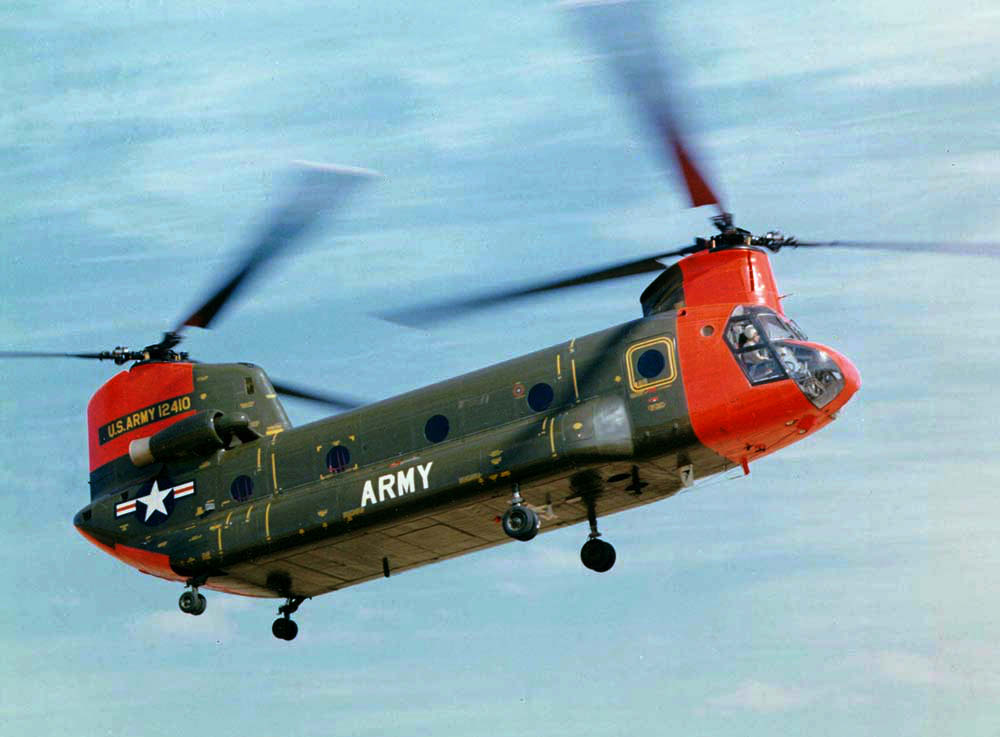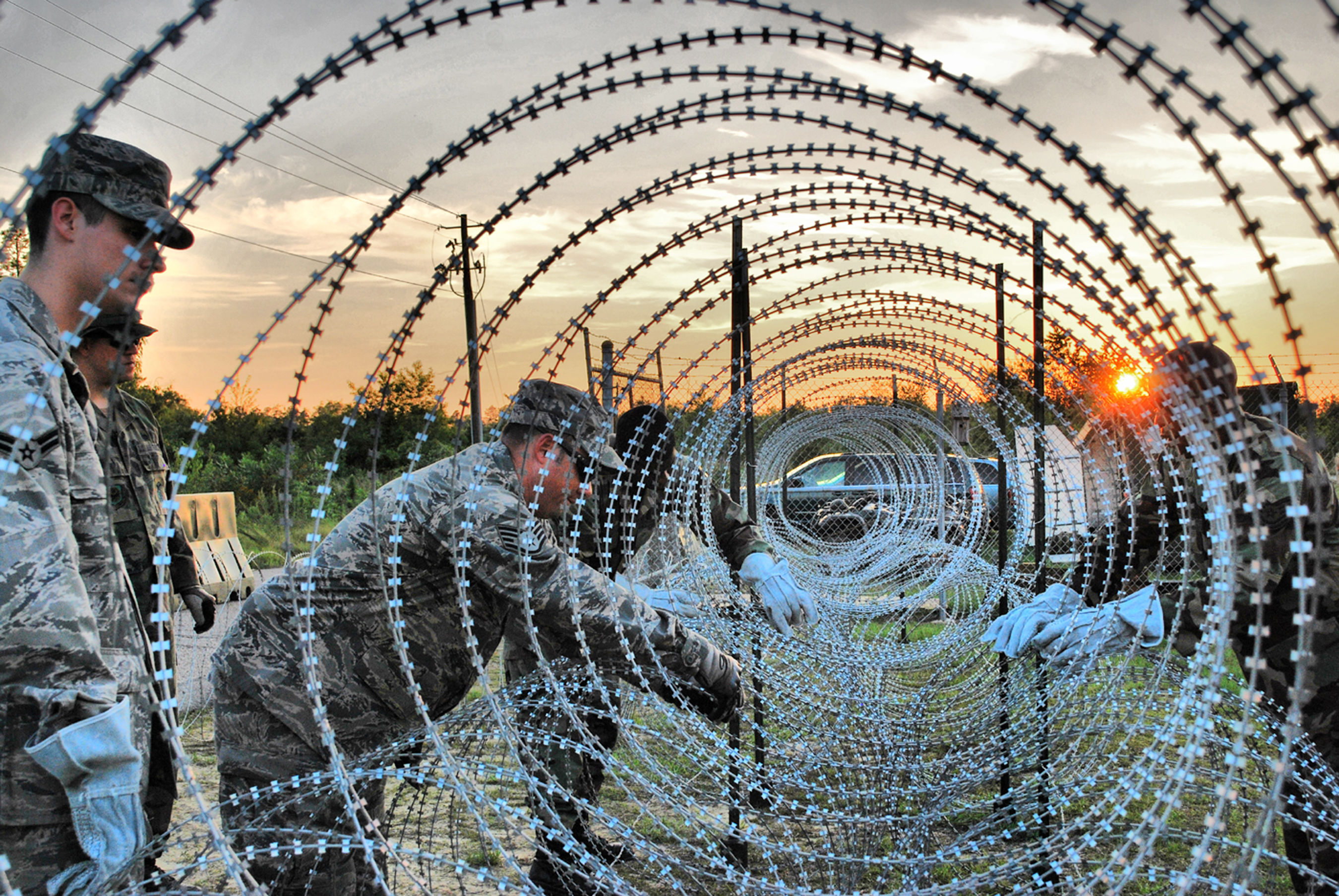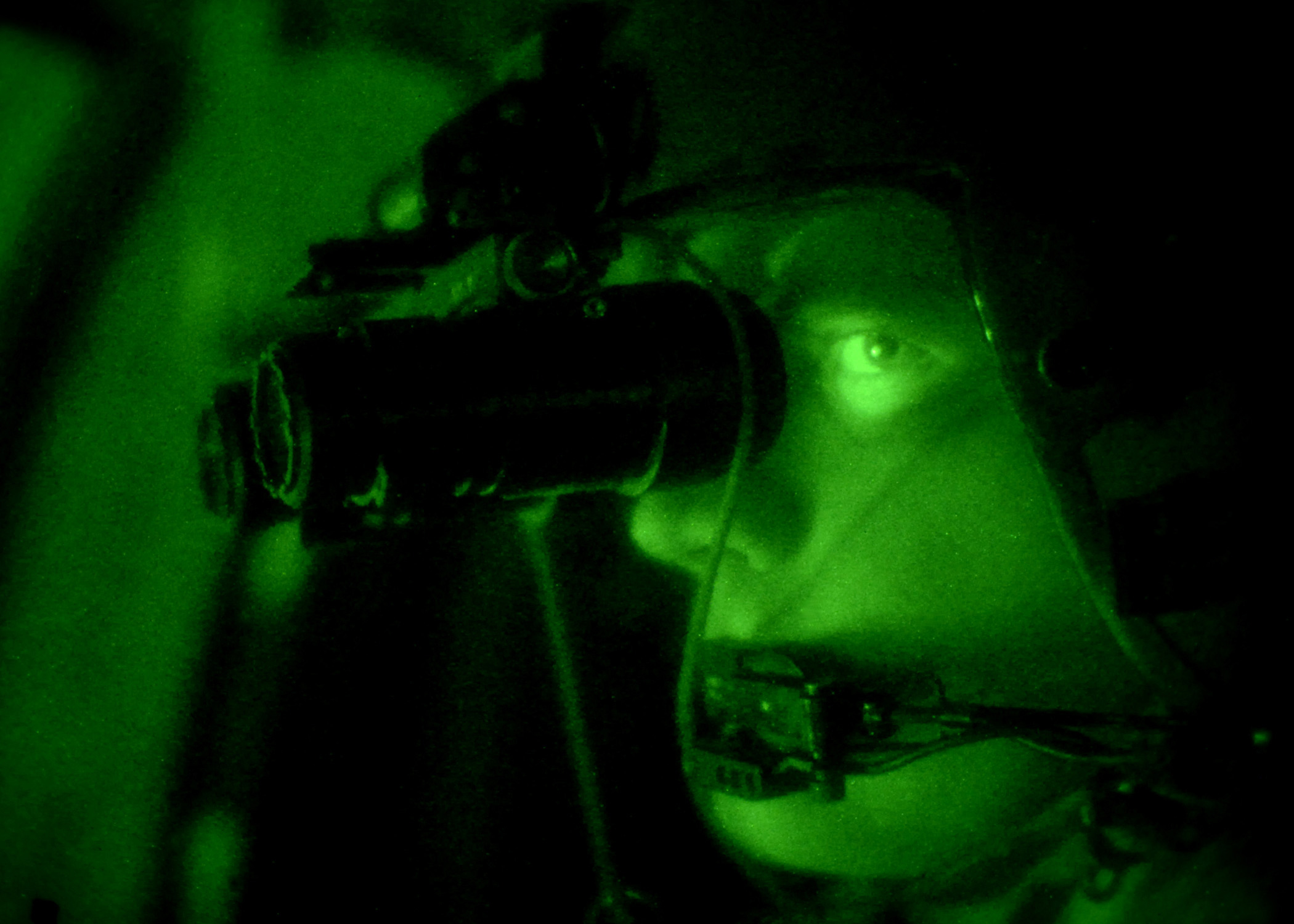|
Battle Of FSB Mary Ann
The Battle of FSB Mary Ann occurred when Viet Cong (VC) sappers attacked the U.S. firebase located in Quảng Tín Province, South Vietnam early on the morning of 28 March 1971. Fire support base (FSB) Mary Ann was located to interdict movement of enemy troops and materiel down the K-7 Corridor and Dak Rose Trail (branches of the Ho Chi Minh trail running from Laos to the coast of South Vietnam). Originally intended to be a temporary base, it evolved into a more permanent location garrisoned by at least one U.S. Army company. The base was manned by 231 American soldiers at the time of the attack. The firebase was scheduled to be handed over to the Army of the Republic of Vietnam (ARVN) when the 1st Battalion, 46th Infantry Regiment (1/46th Infantry) moved to the north. Twenty-one ARVN soldiers from Battery B, 22nd Field Artillery, along with two 105mm howitzers, were on Mary Ann to support ARVN operations to the south. For months leading up to the attack the level of enemy ... [...More Info...] [...Related Items...] OR: [Wikipedia] [Google] [Baidu] |
Vietnam War
The Vietnam War (also known by #Names, other names) was a conflict in Vietnam, Laos, and Cambodia from 1 November 1955 to the fall of Saigon on 30 April 1975. It was the second of the Indochina Wars and was officially fought between North Vietnam and South Vietnam. The north was supported by the Soviet Union, China, and other communist states, while the south was United States in the Vietnam War, supported by the United States and other anti-communism, anti-communist Free World Military Forces, allies. The war is widely considered to be a Cold War-era proxy war. It lasted almost 20 years, with direct U.S. involvement ending in 1973. The conflict also spilled over into neighboring states, exacerbating the Laotian Civil War and the Cambodian Civil War, which ended with all three countries becoming communist states by 1975. After the French 1954 Geneva Conference, military withdrawal from Indochina in 1954 – following their defeat in the First Indochina War – the Viet Minh to ... [...More Info...] [...Related Items...] OR: [Wikipedia] [Google] [Baidu] |
Chu Lai Base Area
Chu Lai Base Area (also known as Chu Lai Combat Base or simply Chu Lai or Kỳ Hà) is a former U.S. Marine Corps, U.S. Army and Army of the Republic of Vietnam (ARVN) base in Chu Lai in central Vietnam. Kỳ Hà Air Facility was part of the installation and was located in the northern half, Chu Lai Air Base was part of the installation and was located to the south-east. History 1965 The base was located on the Kỳ Hà peninsula north of Highway 1 approximately southeast of Da Nang. On 6 May units from the ARVN 2nd Division and 3rd Battalion, 9th Marines secured the Chu Lai area. On 7 May, the 3rd Marine Expeditionary Brigade (3rd MEB), composed of the 4th Marine Regiment, 3rd Reconnaissance Battalion, elements of Marine Aircraft Group 12 (MAG-12) and Naval Mobile Construction Battalion 10 landed at Chu Lai to establish a jet-capable airfield and base area. The Marines provided security for the Seabees as they constructed the airbase. By mid-June the 3rd Battalion, 1 ... [...More Info...] [...Related Items...] OR: [Wikipedia] [Google] [Baidu] |
AK-47
The AK-47, officially known as the ''Avtomat Kalashnikova'' (; also known as the Kalashnikov or just AK), is a gas operated, gas-operated assault rifle that is chambered for the 7.62×39mm cartridge. Developed in the Soviet Union by Russian small-arms designer Mikhail Kalashnikov, it is the originating firearm of the Kalashnikov rifle, Kalashnikov (or "AK") family of rifles. After more than seven decades since its creation, the AK-47 model and its variants remain one of the most popular and widely used firearms in the world. The number "47" refers to the year the rifle was finished. Design work on the AK-47 began in 1945. It was presented for official military trials in 1947, and, in 1948, the fixed-Stock (gun), stock version was introduced into active service for selected units of the Soviet Army. In early 1949, the AK was officially accepted by the Soviet Armed Forces and used by the majority of the member states of the Warsaw Pact. The model and its variants owe their glob ... [...More Info...] [...Related Items...] OR: [Wikipedia] [Google] [Baidu] |
Camouflage
Camouflage is the use of any combination of materials, coloration, or illumination for concealment, either by making animals or objects hard to see, or by disguising them as something else. Examples include the leopard's spotted coat, the battledress of a modern soldier, and the leaf-mimic katydid's wings. A third approach, motion dazzle, confuses the observer with a conspicuous pattern, making the object visible but momentarily harder to locate, as well as making general aiming easier. The majority of camouflage methods aim for crypsis, often through a general resemblance to the background, high contrast disruptive coloration, eliminating shadow, and countershading. In the open ocean, where there is no background, the principal methods of camouflage are transparency, silvering, and countershading, while the ability to produce light is among other things used for counter-illumination on the undersides of cephalopods such as squid. Some animals, such as chameleons and o ... [...More Info...] [...Related Items...] OR: [Wikipedia] [Google] [Baidu] |
CH-47 Chinook
The Boeing CH-47 Chinook is a tandem rotor helicopter developed by American rotorcraft company Piasecki Helicopter, Vertol and manufactured by Boeing Rotorcraft Systems#Background, Boeing Vertol. The Chinook is a heavy-lift helicopter that is among the heaviest lifting Western helicopters. Its name, Chinook, is from the Native Americans in the United States, Native American Chinook people of Oregon and Washington (state), Washington state. The Chinook was originally designed by Vertol, which had begun work in 1957 on a new tandem-rotor helicopter, designated as the Vertol Model 107 or V-107. Around the same time, the United States Department of the Army announced its intention to replace the Radial engine, piston engine–powered Sikorsky CH-37 Mojave with a new, gas turbine–powered helicopter. During June 1958, the U.S. Army ordered a small number of V-107s from Vertol under the ''YHC-1A'' designation; following testing, it came to be considered by some Army officials to be t ... [...More Info...] [...Related Items...] OR: [Wikipedia] [Google] [Baidu] |
Concertina Wire
Concertina wire or Dannert wire is a type of barbed wire or razor wire that is formed in large coils which can be expanded like a concertina. In conjunction with plain barbed wire (and/or razor wire/tape) and steel pickets, it is most often used to form military-style wire obstacles. It is also used in non-military settings, such as when used in prison barriers, detention camps, riot control, or at international borders. During World War I, soldiers manufactured concertina wire themselves, using ordinary barbed wire. Today, it is factory made. Origins In World War I, barbed wire obstacles were made by stretching lengths of barbed wire between stakes of wood or iron. At its simplest, such a barrier would resemble a fence as might be used for agricultural purposes. The double apron fence comprised a line of pickets with wires running diagonally down to points on the ground either side of the fence. Horizontal wires were attached to these diagonals. More elaborate and f ... [...More Info...] [...Related Items...] OR: [Wikipedia] [Google] [Baidu] |
Tripflare
A tripflare is a device used by military forces to secure an area and to guard against infiltration. It consists of tripwire around the area, linked to one or more flares. When the tripwire is triggered, as by someone unsuspectingly disturbing it, the flare is activated and begins burning. The light from the flare simultaneously warns that the perimeter may have been breached and also gives light for investigating. In defensive operations, tripflares are usually placed in predetermined kill zones with machine guns sighted on them. Construction United States military tripflares are issued with a fuze resembling that found on the M67 grenade The M67 grenade is a fragmentation hand grenade used by the United States military. The M67 is a further development of the M33 grenade, itself a replacement for the M26-series grenades used during the Korean and Vietnam Wars, and the older Mk .... The difference is that the tripflare uses a pull fuse. This type of fuse detonates the fl ... [...More Info...] [...Related Items...] OR: [Wikipedia] [Google] [Baidu] |
Keith W
Keith may refer to: People and fictional characters * Keith (given name), includes a list of people and fictional characters * Keith (surname) * Keith (singer), American singer James Keefer (born 1949) * Baron Keith, a line of Scottish barons in the late 18th century * Clan Keith, a Scottish clan associated with lands in northeastern and northwestern Scotland Places Australia * Keith, South Australia, a town and locality Scotland * Keith, Moray, a town ** Keith railway station * Keith Marischal, East Lothian United States * Keith, Georgia, an unincorporated community * Keith, Ohio, an unincorporated community * Keith, West Virginia, an unincorporated community * Keith, Wisconsin, a ghost town * Keith County, Nebraska Other uses * Keith F.C., a football team based in Keith, Scotland * , a ship of the British Royal Navy * Hurricane Keith, a 2000 hurricane that caused extensive damage in Central America * ''Keith'' (film), a 2008 independent film directed by Todd Kessler * ' ... [...More Info...] [...Related Items...] OR: [Wikipedia] [Google] [Baidu] |
M30 Mortar
The M30 106.7 mm (4.2 inch, or "Four-deuce") heavy mortar is an American rifled, muzzle-loading, high-angle-of-fire weapon used for long-range indirect fire support to infantry units. Design The M30 system weighs including the complete mortar with a welded steel rotator, M24A1 base plate and M53 sight. A point of interest in the design of this mortar is the rifled barrel. A rifled barrel requires the round to be a very tight fit to the bore in order for the rifling to engage the round and impart rotation to it. But, in a muzzle-loading mortar, the round has to be loose enough in the bore to drop in from the front. In order to have it both ways, these rounds have an expandable ring at the base, which expands into the rifling under the pressure of the firing charge that propels the round. Additionally, imparting a spin to a round causes it to drift away from the direction of fire during flight and the longer the flight (greater range to target), the farther the drift, so the ... [...More Info...] [...Related Items...] OR: [Wikipedia] [Google] [Baidu] |
M29 Mortar
The M29 is an American-produced 81 millimeter mortar. It began replacing the M1 mortar in U.S. service in 1952 being lighter and with greater range. It was subsequently replaced by the M252 mortar in 1987. Variants included the M29E1 and M29A1, adopted in 1964. These were produced with a hard chrome-plated bore to prolong barrel life and ease of cleaning. The maximum rate of fire is 30 rounds for the first minute followed by 4 to 12 rounds per additional minute. The range is 5,140 yards. The weapon was usually serviced by a crew of five. The normal crew consisted of a squad leader, a gunner, an assistant gunner and two ammunition handlers. Users * : 8.1 cm GrW M29/65 * * * * * * * * * * * * * * * * * * * : Howa produced a modified version of the M29A1 as ''Type 64'' * * : produced under license by Daewoo Daewoo ( ; Hangul: , Hanja: , ; literally "great universe" and a portmanteau of "dae" meaning great, and the given name of founder and chairman Kim W ... [...More Info...] [...Related Items...] OR: [Wikipedia] [Google] [Baidu] |
Night Vision Device
A night-vision device (NVD), also known as a night optical/observation device (NOD), night-vision goggle (NVG), is an optoelectronic device that allows visualization of images in low levels of light, improving the user's night vision. The device enhances ambient visible light and converts near-infrared light into visible light which can be seen by the user; this is known as I2 ( image intensification). By comparison, viewing of infrared thermal radiation is referred to as thermal imaging and operates in a different section of the infrared spectrum. A night vision device usually consists of an image intensifier tube, a protective housing, and may have some type of mounting system. Many NVDs also include a protective sacrificial lens, mounted over the front lens (ie. objective lens) on NVDs to protect the latter from damage by environmental hazards and some can incorporate [...More Info...] [...Related Items...] OR: [Wikipedia] [Google] [Baidu] |
55th Air Defense Artillery Regiment
The 55th Air Defense Artillery Regiment was an Air Defense Artillery regiment of the United States Army that was first constituted in 1917 in the Regular Army. It was previously the 55th Artillery, U.S. Army Coast Artillery Corps. (CAC) Lineage Constituted 1917 and organized CD Boston 12-1-17 as 55th Arty, CAC, by redesignation of 152nd Co, CAC;, 96th Co, CAC; 11th Co, MANG, CAC; 83rd Co, CAC; 4th Co, MANG; 9th Co, RING; 3rd Co MANG; and 5th Co, MANG. In addition, many individual transfers were made from the 1st, 2nd, 6th, & 9th Cos, MANG, and 13th Co, RING. The 55th Arty departed New York for Europe 3-25-18. After additional training, the 55th Arty was assigned to the 31st Bde, CAC, in August 1918 and served in France until the Armistice. The 55th Arty departed Brest, arriving New York 1-22-19 and moved to Camp Mills, NY, until 1-26-19, when it moved to CD Long Island Sound. 1st Bn was stationed at Fort H.G. Wright, 2nd & 3rd Bns at Fort Terry. There most of the regiment's NG ... [...More Info...] [...Related Items...] OR: [Wikipedia] [Google] [Baidu] |







